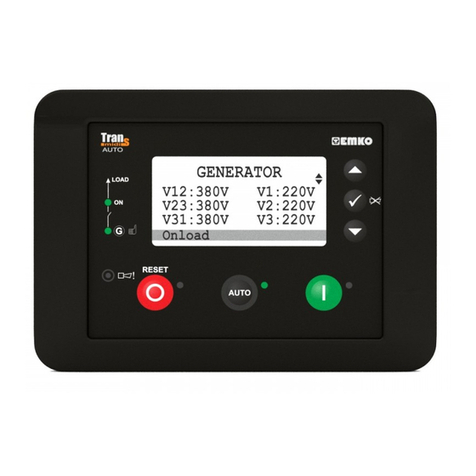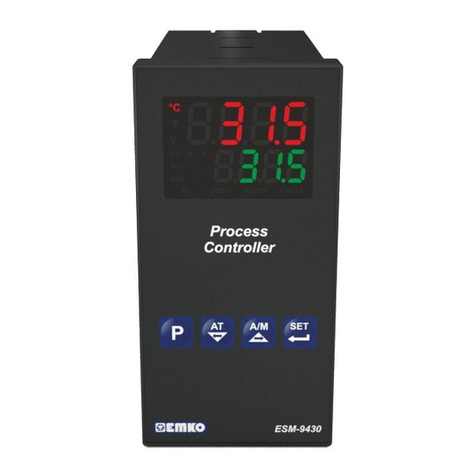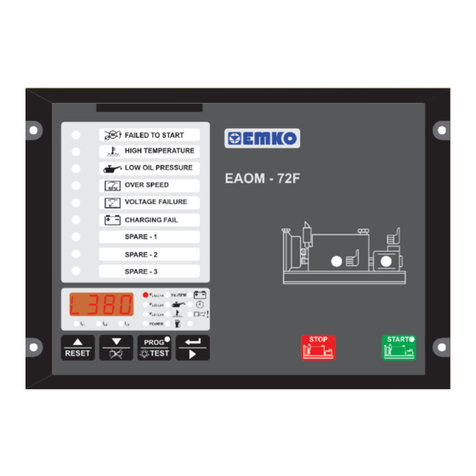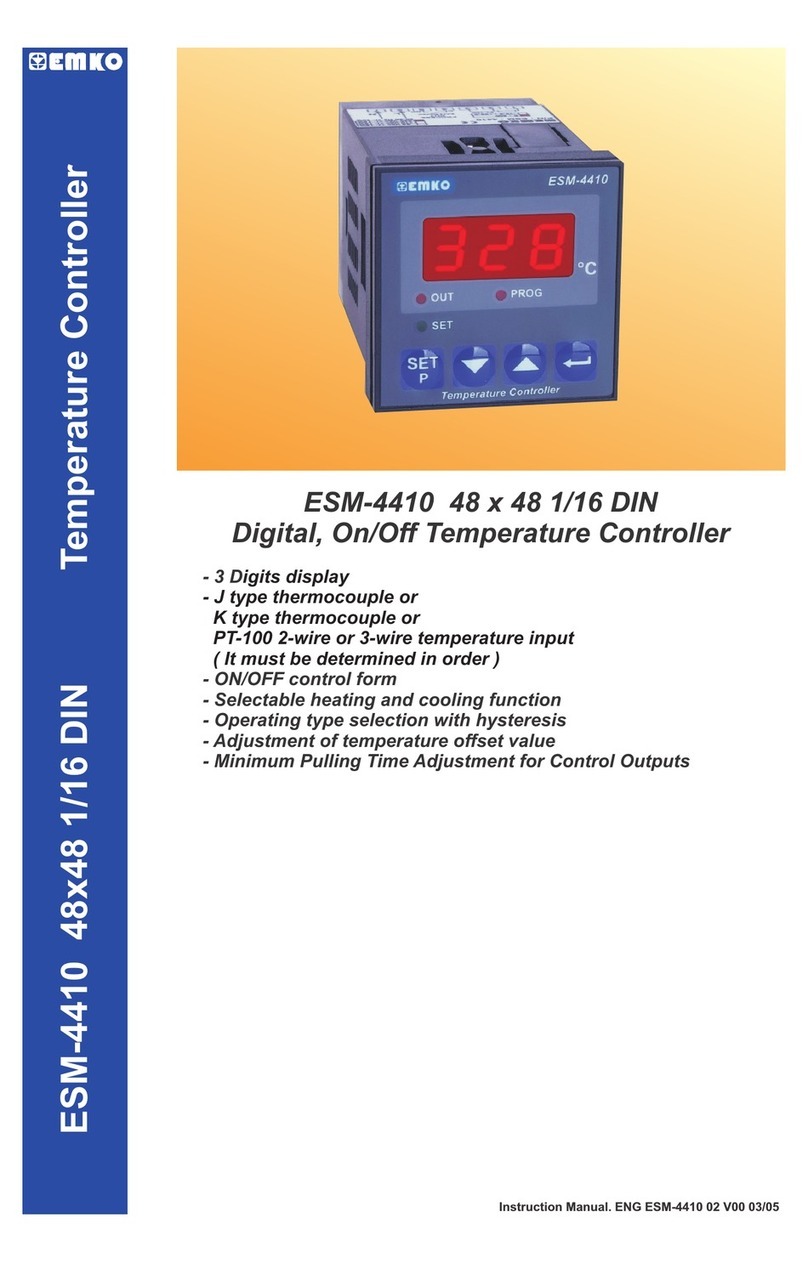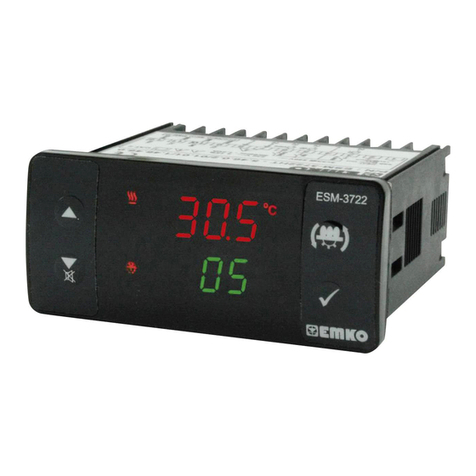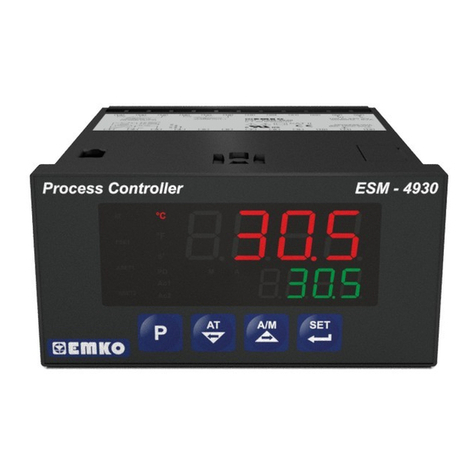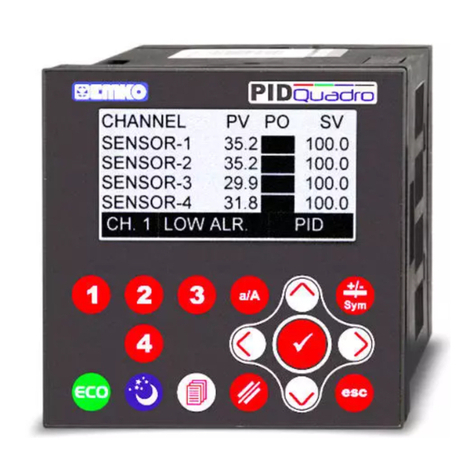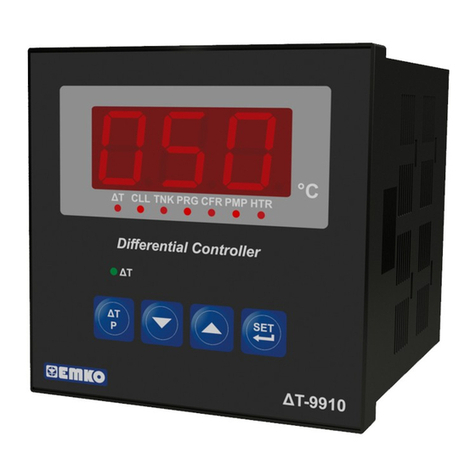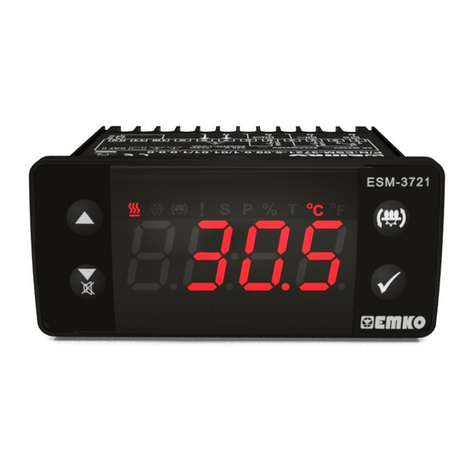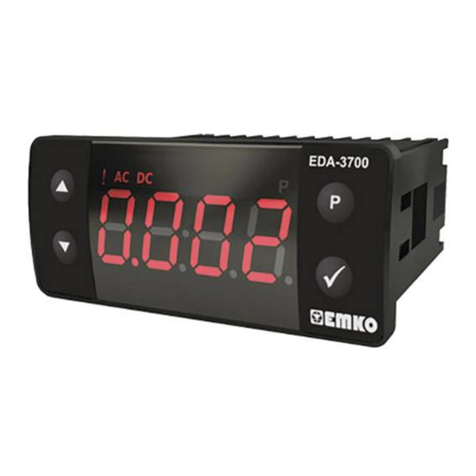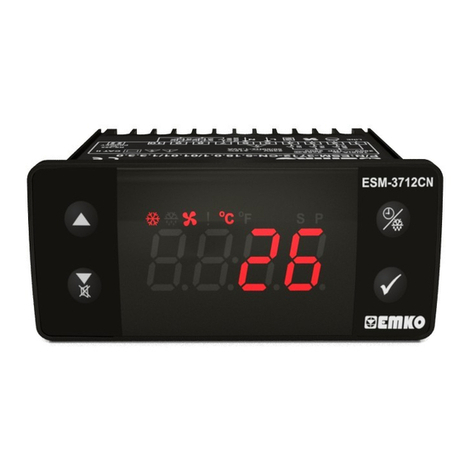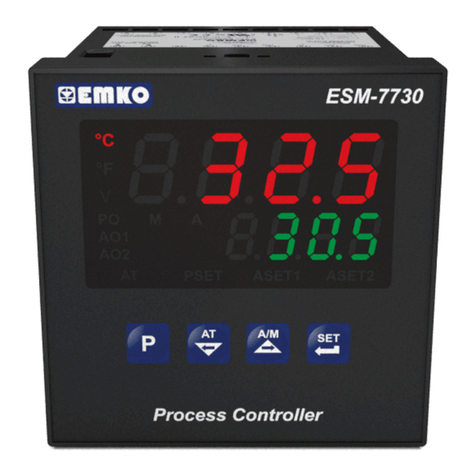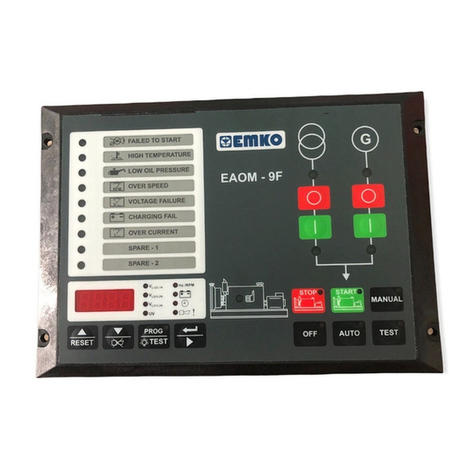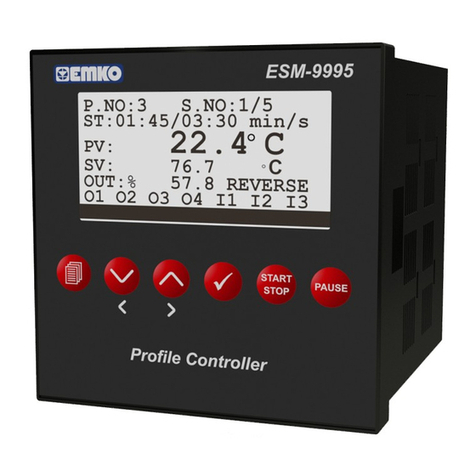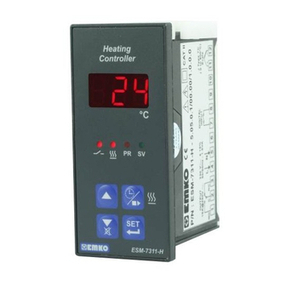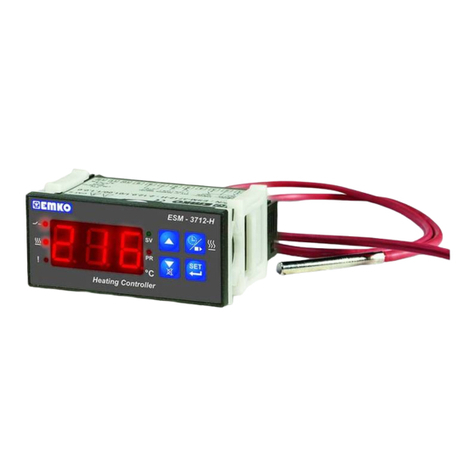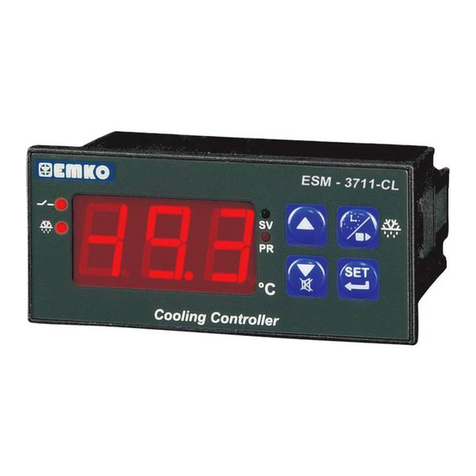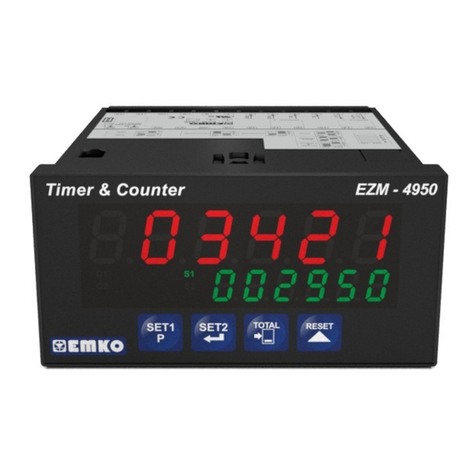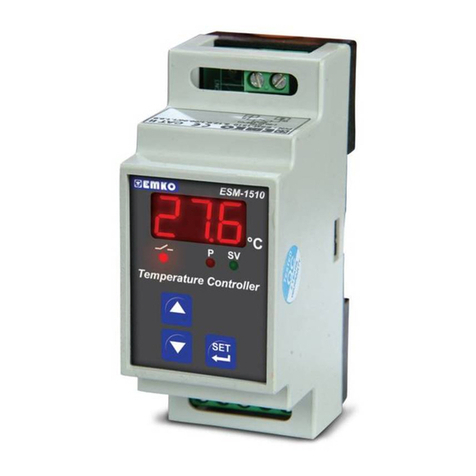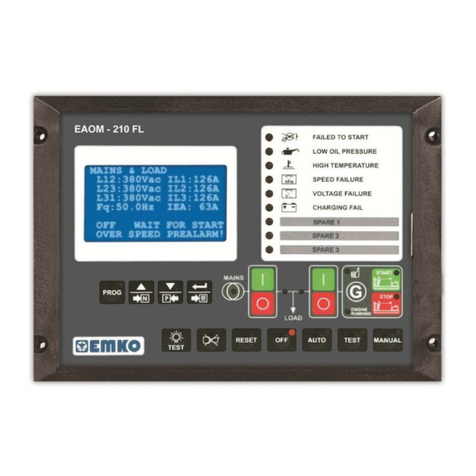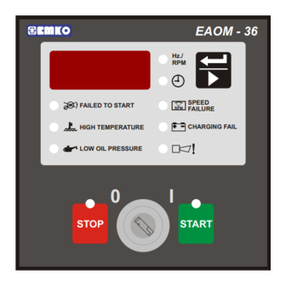CONTENTS
Page 6
Page 12
Page 8
Page 16
Page 22
1.PREFACE............................................................................................................................................
1.1 GENERAL SPECIFICATIONS
1.2 WARRANTY
1.3 MAINTENANCE
2.INSTALLATION....................................................................................................................................
2.1 GENERAL DESCRIPTION
2.2 DIMENSIONS
2.3 PANEL CUT-OUT
2.4 ENVIRONMENTAL RATINGS
2.5 PANEL MOUNTING
2.6 INSTALLATION FIXING SCREWS
2.7 REMOVING FROM THE PANEL
3.ELECTRICAL WIRINGS......................................................................................................................
3.1 TERMINAL LAYOUT AND CONNECTION INSTRUCTIONS
3.2 ELECTRICAL WIRING DIAGRAM
3.2.1 1-PHASE WIRING DIAGRAM
3.2.2 3-PHASE WIRING DIAGRAM
...................
4.3.1 TECHNICAL SPECIFICATIONS
4.3.2 INSTALLATION INSTRUCTIONS
4.3.2.1 MINIMUM SYSTEM REQUIREMENTS
4.3.3 INSTALLING EAOM-6 SOFTWARE
4.3.4 USING OF EAOM-6 COMMUNICATION SOFTWARE
4.3.5 DESCRIPTION
4.3.6 OBSERVATION WINDOW
4.3.7 OPERATOR PARAMETERS WINDOW
4.3.8 TECHNICIAN PARAMETERS WINDOW
4.3.9 MAIN MENU
4.3.9.1 FILE
4.3.9.2 PROGRAMMING
4.3.9.3 SETTINGS
4.3.10 ENTERING TO THE OPERATOR PARAMETERS WINDOW
4.3.11 ENTERING TO THE TECHNICIAN PARAMETERS WINDOW
4.3.12 ENTERING TO THE ADJUSTMENT WINDOW
4.3.13 LOAD THE CONFIGURATION FILE FROM THE DISC
4.3.14 SAVE THE CONFIGURATION FILE TO THE DISC
4.3.15 UPLOAD
4.3.16 DOWNLOAD
5.PARAMETERS.....................................................................................................................................
5.1.4 MAINTENANCE INDICATION
5.1.15 CONFIGURABLE OUTPUTS
5.1.16 OPERATOR PASSWORD
5.1.17 TECHNICIAN PASSWORD
4.RS-232 SERIAL INTERFACE, PROGRAMMING THE DEVICE OVER PC OR MODEM
4.1 CABLE CONNECTION BETWEEN RS-232 TERMINAL OF THE DEVICE AND PC
4.2 CABLE CONNECTION BETWEEN RS-232 TERMINAL OF THE DEVICE AND MODEM
4.3 PC INTERFACE
5.1. PROGRAM FUNCTIONS
5.1.1 ALTERNATOR VOLTAGE
5.1.2 ALTERNATOR FREQUENCY
5.1.3 BATTERY VOLTAGE LOWER LIMIT
5.1.5 SPEED SENSING INPUT SELECTION
5.1.6 STOP / FUEL SOLENOID SELECTION
5.1.7 STOP MAGNET ENERGISING TIME
5.1.8 ENGINE STARTED SIGNALS
5.1.9 BATTERY VOLTAGE
5.1.10 ENGINE STARTING
5.1.11 OIL PRESSURE BY-PASS TIME
5.1.12 CONTROL ON DELAY
5.1.13 ENGINE COOLING TIME
5.1.14 CONFIGURABLE INPUTS
3
